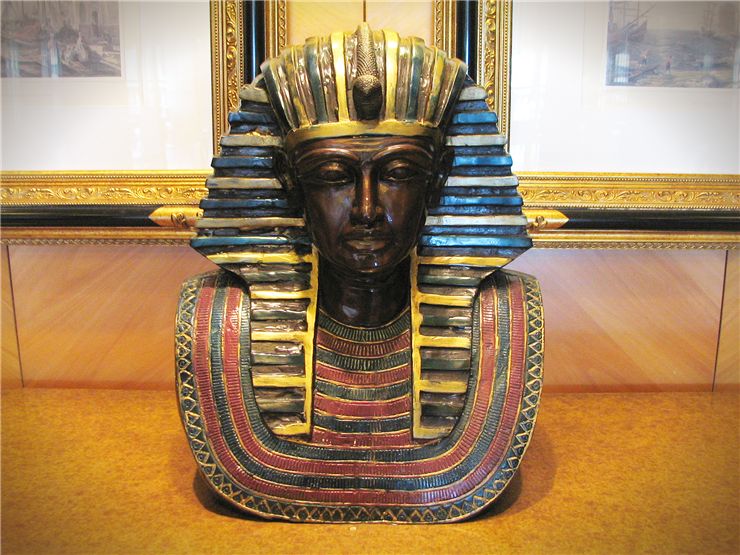History of Egyptian Masks
In ancient Egypt, masks were primarily used for two purposes: as death masks and as ritual masks.
Ancient Egyptians believed that it is very important to preserve a body of the dead because the soul has to have a place where to dwell after the death. Preservation of the dead body was done by mummification - a process that involved removing of the internal organs and placing it in canopic jars, wrapping body in linen and embalming. It was also considered very important for the soul to be able to recognize the body so it can return to it. For that reason were used death masks.
Death mask were made in the likeness of the deceased and from the different materials. Early masks were made from wood, in two pieces and connected with pegs. After that Egyptians used, so called, cartonnage, a material made from papyrus or linen and soaked in plaster and then molded on a wooden mold. That was, of course, a cheap variant intended for lower class. Royal death masks were made from precious metals, first of all - gold or gold leaves on bronze. One of the most famous funerary masks is the mask of the Tutankhamen.

All death masks were made to resemble deceased but with a slightly enlarged eyes and a faint smile and also showed fashion of the moment with painted jewelry and makeup. These death masks later evolved into a full body inner coffins in the human shape with same decorations and ornaments.
Ritual masks were worn by priests during rituals. Those masks were also made from cartonnage and then painted. They were made in the likeness of animal heads, heads of gods of ancient Egypt. Head of Anubis, god of death with a head of a jackal, was worn during funeral ceremonies such is “Opening of the Mouth” which was a symbolic animation of a mummy. Priest would wear a mask on his head and it would cover his shoulders. Head of the mask was also taller than a priest’s head so he was constrained to look through two small holes on the neck of the mask. Other gods and goddesses also had their masks. Religion in the Ancient Egypt was very important. Temples were places where gods lived and statues of gods were gods themselves. Everything considering the religion was shrouded in mystery. Priest who wore a mask of a god during a ceremony would become an avatar of god, an embodiment of god himself. Priest would speak his words and convey his will.

